We’re pleased to report that the Chapel Organ Project is progressing well. Scaffolding was put in place in February, protective coverings set up, and a Viscount digital organ installed to ensure that services can continue without interruption.
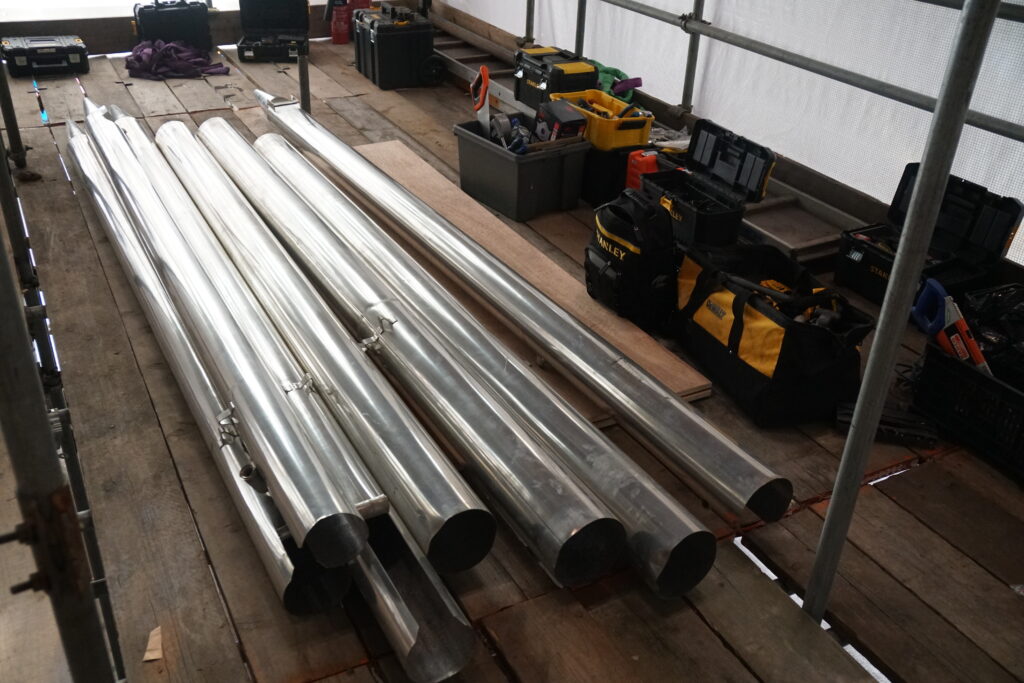
In early March, Mander Organ Builders began the delicate process of removing the College’s current organ. This major undertaking proceeded smoothly. Most of the pipework and other components were transported in Mander’s own vans but the bigger pipes were taken away in a removal firm’s large lorry.
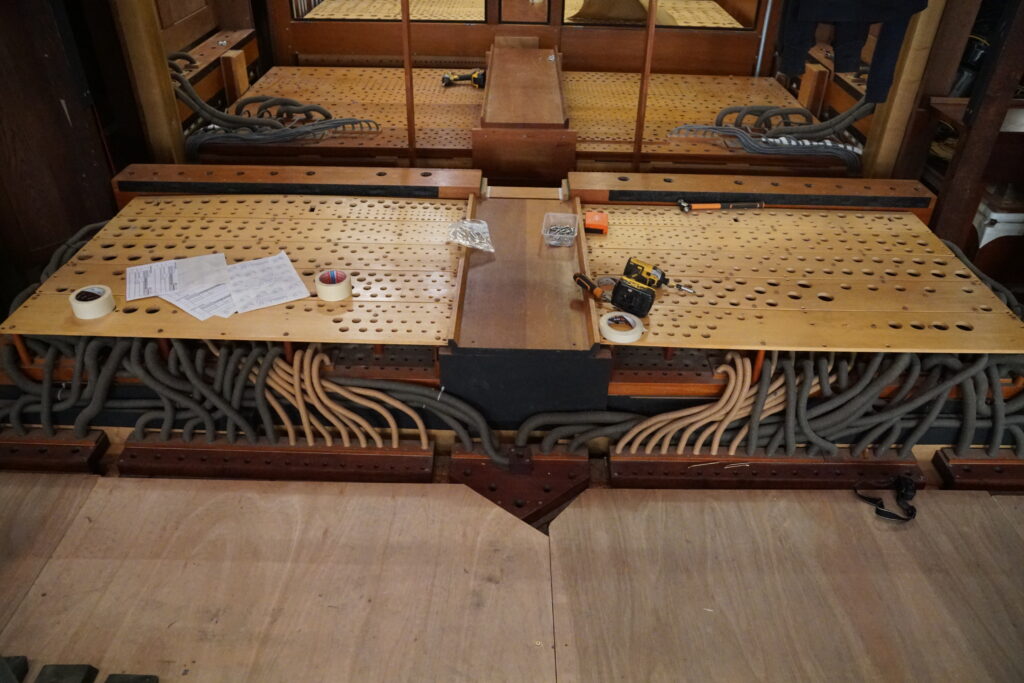
The Mander instrument has been a cornerstone of the College since 1994, playing a key role in the Johnian experience during major events such as matriculation and graduation services. It has been heard in numerous radio broadcasts and is featured on several acclaimed Choir recordings. Whilst many will be sad to see it go, this organ will start a new lease of life as it is being relocated to the Church of St John the Divine in Kennington, a South London parish with which the College shares a long-standing partnership. The Mander’s aficionados may also be pleased to hear that the en chamade pipes (the ‘Trompeta Real’) and the ‘Cymbalstern’ (the rotating star that sits atop the organ case and makes a tinkling sound when activated) are both being retained and incorporated into the new instrument. The organ case, designed by John Oldrid Scott (son of chapel architect, George Gilbert Scott), is also being kept and will house the Willis organ.
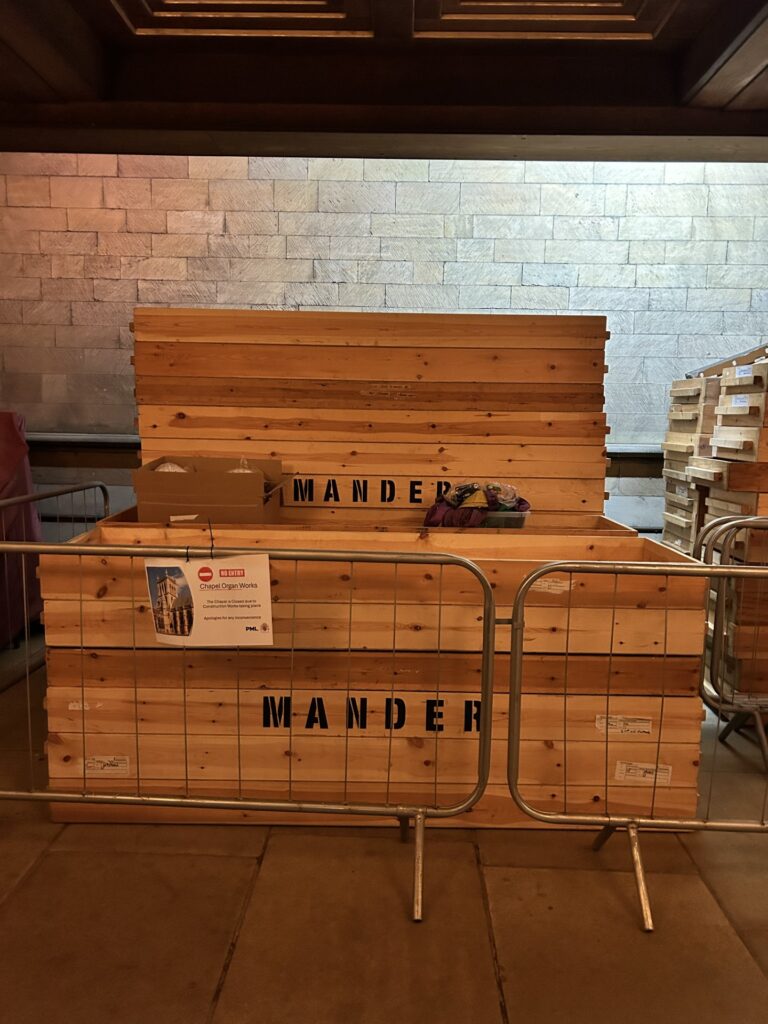
Now that the Mander organ has been removed, restoration work has begun to address any necessary repairs to the Chapel building and prepare the space for the installation of the new Willis organ. This instrument is currently coming to the end of a detailed restoration and enhancement in the Durham workshops of organ builders Harrison & Harrison Ltd.
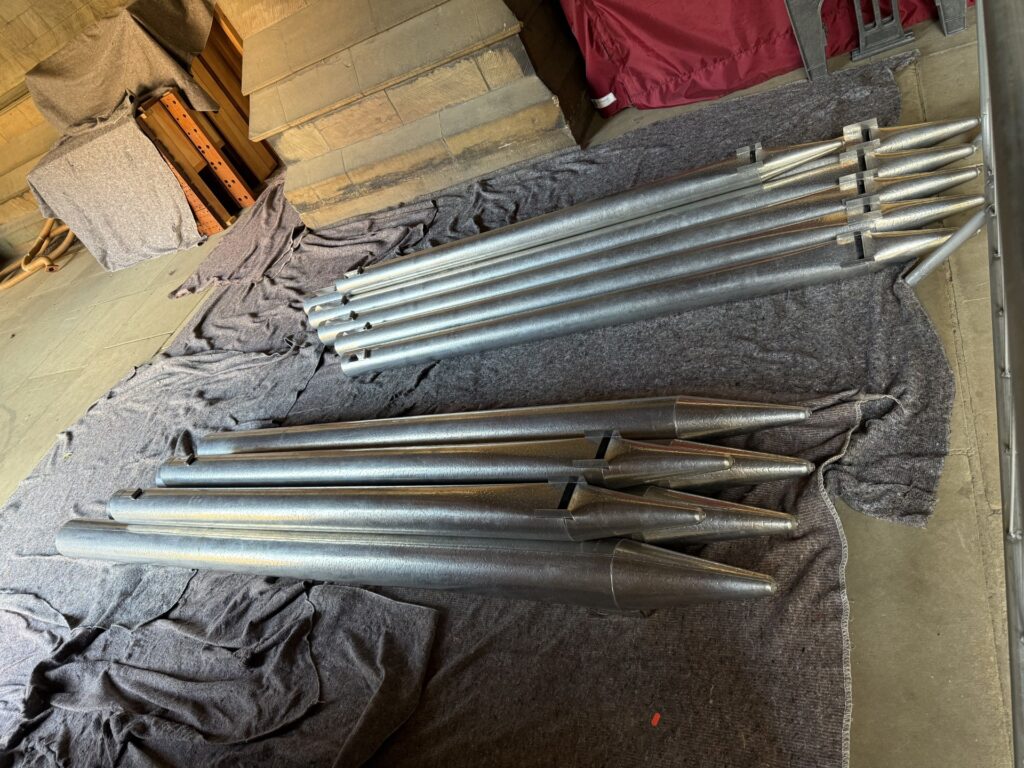
The Willis organ, originally built by the renowned English organ maker ‘Father’ Henry Willis, was first housed in Hampstead Conservatoire before being moved to St Peter’s Church, Brighton in 1910. Willis, celebrated for his work on major organs like those at the Royal Albert Hall and St Paul’s Cathedral, was a pioneer in organ-building technology during the Victorian era.
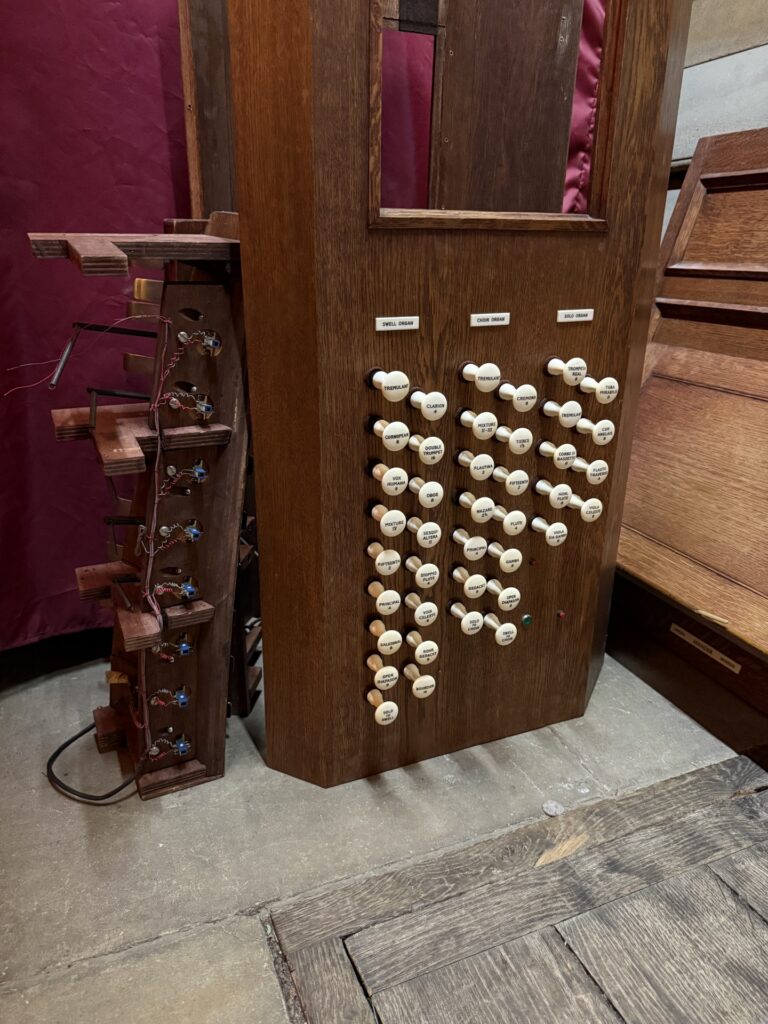
In July, the Willis organ will be transported to Cambridge as the installation process begins. This process will continue throughout the summer, with the scaffolding expected to be removed by late September. Voicing and final adjustments will take place during Michaelmas term, and the organ is set to be in use by the start of 2026. The project will culminate in an inaugural recital by the renowned French organist Olivier Latry in May 2026.
Photo credits to Isabelle Freeman and Iain MacLeod-Jones

